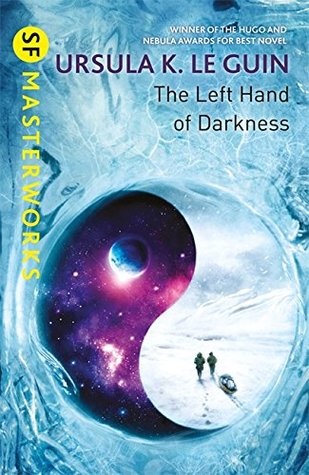The Left Hand of Darkness
By Ursula K. Le Guin
Published 1969
Score: 9/10
Alright, now I understand why Ursula K Le Guin was such a giant in the field. The Left Hand of Darkness isn’t the first thing I’ve read by her, but this is the novel that made me go ‘ahh, I get the hype now’. I loved this story, and whilst I was saddened at the news, it’s only now that I fully appreciate just what a poorer place the world has become with Le Guin’s passing.
The Left Hand of Darkness is part of Le Guin’s Hanish Cycle; a universe where planets have been seeded with humans, and now we’re all re-discovering each-other. This is book 6 in the series, but so far I have seen nothing to indicate that there is any need to read the series in order as each story stands alone. Given The Left Hand of Darkness’s status as one of the most influential books in the genre, there isn’t really much for me to say that hasn’t been said a million times before, so I’ll keep this review brief.
This story takes place on the planet Gethen, aka Winter. The people of Gethen differ from the other humans in the Hanish cycle in that they have no fixed gender. Instead, the Gethenians are androgynous most of the time, and enter a state called kemmer every month that allows them to become either sex. Into this world comes Genly Ai, a man from Earth who has come to introduce the Gethenians to the rest of humanity. Ai’s mission is hampered by the simple fact that due to their different understandings of sexuality and social politeness, he doesn’t understand or fully trust the Gethenians. Le Guin uses the Gethenian’s ambisexuality not only to build a compelling story about the challenges of communication, but also to explore the ways gender influences our lives, our relationships, and our society.
Gethenian ambisexuality also plays a huge part in worldbuilding, as so much of Gethenian society differs from ours because of it. The other big part of the worldbuilding is the planet Winter itself. As you can tell from the name, Gethen/Winter is a very cold world, and Ai is shown dealing with all the problems involved with travelling over a frozen world. Throughout the story, we get retellings of Gethenian folklore, giving the planet a rich history. The geography, politics, and society of this world are so fantastic, but also feel so believable.
The Left Hand of Darkness is a classic for many good reasons. It is a milestone of feminist science fiction, an example of amazing world-building, and a love story that isn’t a romance story. Also, the ending really had a big impact on me. Had to stop for a moment and process what had happened.
 I’ve been reading some of Le Guin’s short fiction as well. I have Vol. 2 of her short story collection The Wind’s Twelve Quarters, and devoured that before I read The Left Hand of Darkness. This collection included the Hugo Award Winning story The Ones Who Walk Away From Omelas, which portrays a perfect, happy city with one dark secret. This story was much shorter than I’d been expecting but does an excellent job of making the reader uncomfortable and introspective about our own morality. The collection also contained The Direction of the Road, which given my strange fondness for plants as viewpoint characters, I also enjoyed a lot. Actually, I liked all the stories except A Trip to the Head. It’s unfortunate that don’t have the full collection, but after reading these stories, I’m looking forward to getting more.
I’ve been reading some of Le Guin’s short fiction as well. I have Vol. 2 of her short story collection The Wind’s Twelve Quarters, and devoured that before I read The Left Hand of Darkness. This collection included the Hugo Award Winning story The Ones Who Walk Away From Omelas, which portrays a perfect, happy city with one dark secret. This story was much shorter than I’d been expecting but does an excellent job of making the reader uncomfortable and introspective about our own morality. The collection also contained The Direction of the Road, which given my strange fondness for plants as viewpoint characters, I also enjoyed a lot. Actually, I liked all the stories except A Trip to the Head. It’s unfortunate that don’t have the full collection, but after reading these stories, I’m looking forward to getting more.
Ursula K. Le Guin is no longer with us, but her influence still lives on. Modern fantasy and science fiction owes so much to her work, and I’d encourage anyone who hasn’t read any Le Guin to find a copy of The Left Hand of Darkness as soon as possible.
~ Lauren


Fantastic review! I’ve been meaning to read The Left Hand of Darkness, but never got around to it. I think your review just pushed me over the edge.
Glad to help. I hope you enjoy it as much as I did.
Pingback: The Left Hand of Darkness | I read that in a book